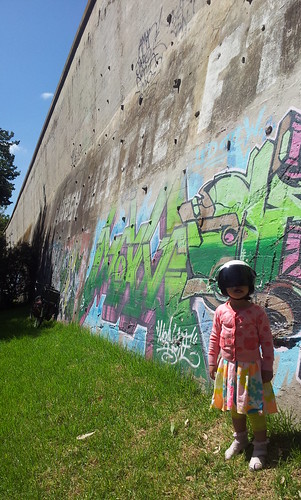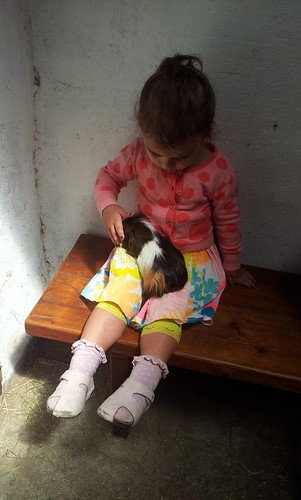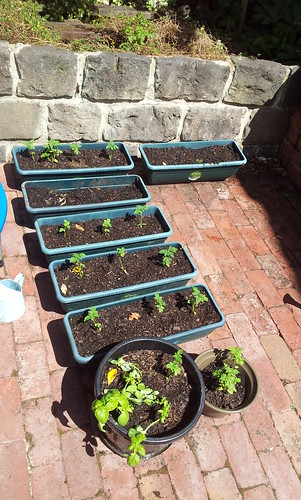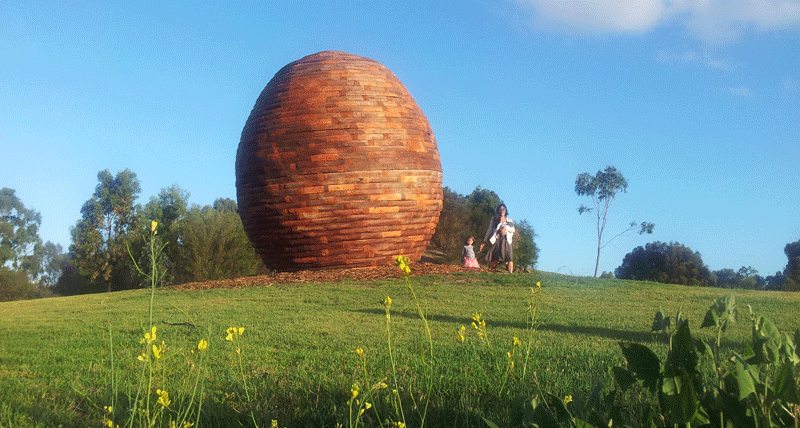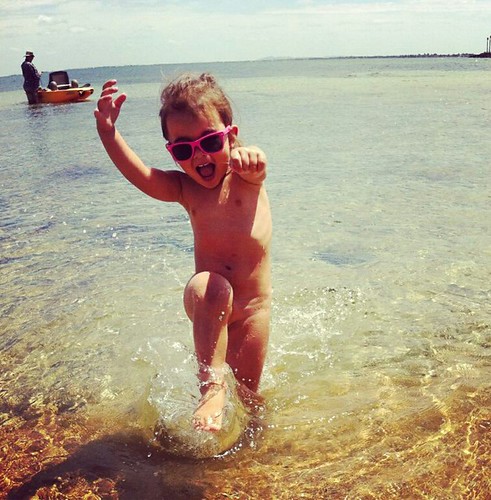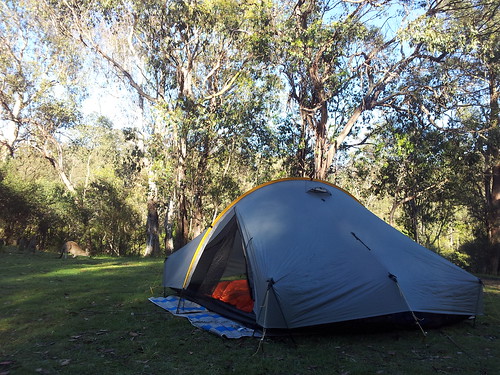Took Eve for a ride along the Yarra River, to watch the end of the Mayan calendar and the Great Galactic Alignment.
At 11am, the moment that was said to be the alignment, Eve nursed a guinea pig and I rare feeling of contentedness.
21 December 2012
20 December 2012
Maya is born
Maya Rae was born at 10am on 18 Dec 2012 after a 1 and 1/2 hour labor, weighing in at 3.4kg.
I put in a garden in honour
We had a picnic the next day, in the same place we had a picnic the night before, and buried the placenta.
And got one more photo for the animated GIF
I put in a garden in honour
We had a picnic the next day, in the same place we had a picnic the night before, and buried the placenta.
And got one more photo for the animated GIF
01 December 2012
Ocean swimming in Melbourne, we miss Darwin
Here's a photo of Eve, that may as well be Darwin. Ocean side down here is nothing like the Top End, but Eve carries the spirit.
10 November 2012
A desperate search for snow, but a lovely camp out
Ron picked me up on Friday arvo, and we head into the Upper Murray, approaching the Main Range from the West. We camped at Tom Groggin first night.
Caught the lift up from Thredbo the next morning, and trekked up Mt Kosciusko, then across toward Mt Townsend, in search of skiable snow. We found a few runs, but it was pretty sparse.
We missed the lift back down, the walk hurt. Drove round to Island Bend where we met Thor, Robbie and Karen and a few others. They'd set up Thor's hot tub next to the Snowy River, and at about midnight I overcame my phobia of sharing a bath, and enjoyed a sensational experience under the Milky Way drinking a beer.
Caught the lift up from Thredbo the next morning, and trekked up Mt Kosciusko, then across toward Mt Townsend, in search of skiable snow. We found a few runs, but it was pretty sparse.
08 October 2012
Great snow, skiing Hotham, testing Peak Oil Jackets
At last, we had the opportunity to test the 2 prototype jackets in snow and blizzard conditions out back of Mount Hotham Victoria. Here's a video we made on phones, from the 2 days
So what did we learn?
We first pulled one of the jackets out of the bag when we stopped to put chains on the car. Yep, being canvas we could confidently chuck the jacket down in the mud and rocks, and not worry about pressing a hole in it.
Our first day was spent resort skiing. We're happy to confirm both prototypes kept us warm, dry and protected, including on the slow lift rides over the ridge and into the howling southerly that blew all day.
The unworn surface of the oiled canvas seemed to catch and hold the needle and stella snow flakes a bit, compared to the plastic jackets around us, but we suspect that's because the jacket was new, with the surface being kinda furry. By the end of the second day, we noticed the surface was starting to get that signature shine of a worn oilskin, and snow fell away.
The Riri Aqua zips worked beautifully! They set, glide and unset effortlessly. Easily the best waterproof zip out there. We'll change the placement of the zip though. We thought to end the front zip at the neckline, leaving the studs and plackets to close the neck, and keep it free and flexible. We wanted to avoid that slight stiffness that a zip can bring to the neck, but we concede this is not a big enough problem to warrant loosing the ease of the zip. In future makes, for the jackets that have the Riri Aqua zips, we'll place them up over the neck, and leave off the plackets and studs.
The difference between the Peak Oil Jacket prototype 2 and 3 is in the sleeve. On the 2 we set the sleeve in, meaning a seam runs over the shoulder and under the arm. On the 3 we used a raglan sleeve, where the seams run up to the neckline. We think the raglan fits better and offers more freedom of movement, but we'd like to work a bit more on the set-in sleeve, and experiment with a removable sleeve design.
The pockets. We reckon 4 pockets on the front is overkill. We didn't use the 2 lower pockets at all, and the vertical zip was difficult to manage. Either we'll leave off the lower pockets, or rethink their placement to reflect the rarity of their use. The two breast pockets where very useful though, and the vertical Aqua zips made them easy to access with a pack on.
The hoods covered well, and in these conditions they're a must have - both fully on, or half up the back of the head with the collar all done up. We're looking for a better way to do hoods though, that fits them to all different head and neck sizes, that blocks all wind, and keeps fitted on a moving head. We're also conscious that some people like to remove the hood, we've got a few ideas...
We're not sure the Ventile lining needs to be sewn in. We're thinking to try a removable lining so to make it washable and replaceable, plus the added versatility of using the liner alone, or swapping it for insulation.
Finally, the weight question. These jackets are heavier than their plastic counterparts, but we honestly didn't notice a difference. We spent a day resort skiing, followed by a pretty big day back country, which had us wearing them in a full range of situations and body temperatures. They packed down into our bags no trouble, and seemed to feel nicer than the plastics when we wore them climbing out of a valley.
All up, we're stoked the prototypes worked in the conditions we're designing for. They're confidently tough, perform well in snow conditions, feel good when active, and the weight didn't bother us on these extended day trips. This first test has shown us we're on the right track, and with a few minor tweaks we'll have a jacket we're proud to put out to market.
21 September 2012
Move to Melbourne
We were sad to leave Darwin, it really is a lovely place. Yes its hot, but the public pools are free, the shopping centres have aircon, the sunsets are magic, and the people are open hearted.
We moved to Melbourne where Leigh took a job at La Trobe University and Sunshine settled in to the idea of having another baby. We live in a nice house in Ivanhoe, Leigh rides to work each day.
We moved to Melbourne where Leigh took a job at La Trobe University and Sunshine settled in to the idea of having another baby. We live in a nice house in Ivanhoe, Leigh rides to work each day.
11 September 2012
Fishing
Gary from work, took Jon (also from work) and I out to see his cousin Greg - a NT Ranger out at the Mary River National Park, and his mate Chippy. Fires were burning all around this day. We went fishing on the Wildman River, along paper bark river banks. We could see big barramundi swimming past plenty, but could only hook 3 on the lures, and none on the live bait. A spear is definitely the better way to catch barra in the dry season, a time when they hibernate.
03 August 2012
Ubud
Sunshine, Eve and I just returned from a week in Ubud, Bali. Despite the seemingly unchecked growth in tourism in Bali - the people and their art, their land and its beauty have retained so much.
Here's an 8 minute video we made on my phone at nights.
Here's an 8 minute video we made on my phone at nights.
01 May 2012
Living in Darwin now
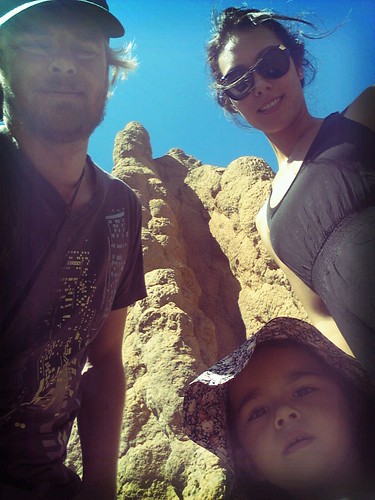 |
| Ant mound on the way up to Litchfield NP |
We moved up here in March, and have settled into a very large house in Wanguri, on the North side of Darwin.
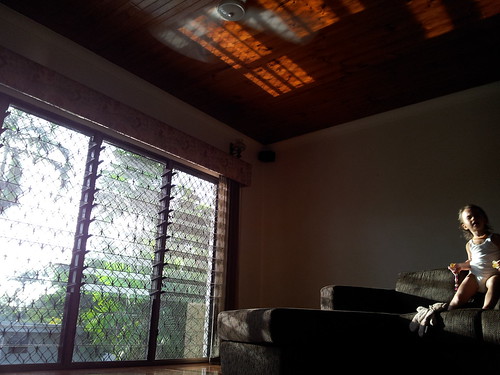 |
| Our lounge room |
We have native bees in our brickwork!
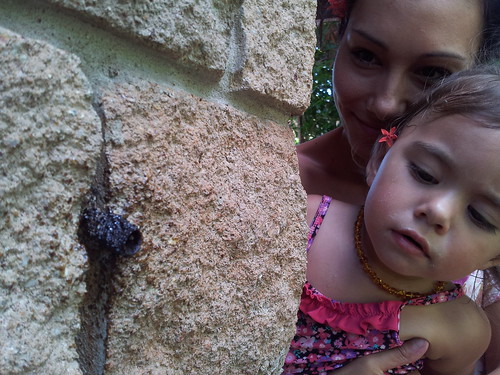 |
| Stingless, native bees, make tasty honey |
Our shipping container arrived a couple of weeks ago, and we've finished unpacking it, and are feeling much more comfortable now. Unfortunately my bike of 13 years was stolen from the front yard within a week of unloading it.
 |
| Unloading the container |
We live very close to Casuarina Shopping Centre, which has all the mod cons, including a Philippine food store that serves Sunshine her fav, halo halo.
 |
| Halo halo at Casuarina Square |
Sunshine has scored a job in a local design company, and Eve has found a day care that she likes.
We're all liking Darwin much more than we thought, with lots of swimming pools to visit, including free ones with water slides (Leanyer pools), and amazing national parks to visit. We all visited Litchfield National Park in March, but it was technically still inside the wet season, so swimming was limited. We'll definitely be going back out there, but on days when crowds won't.
 |
| Florence Falls, very crowded |
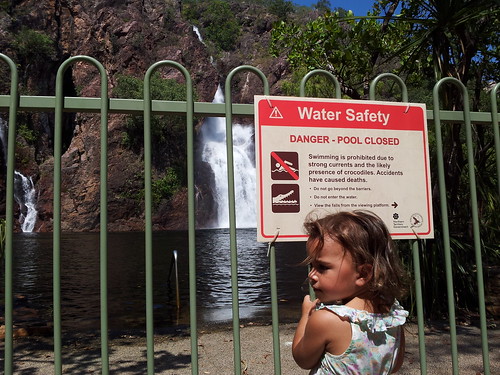 |
| Wangi Falls not open for swimming |
Yesterday I was invited fishing in Kakadu, and caught 3 barramundi all over 60cm! Kakadu has very impressive rock formations I'd like to explore, and many rock art sights as well. Its a bit more of a committed trip though. It can be done in a day, but multi day if family comes too.
 |
| My first barra |
The days are cooling off a bit now.. lovely mornings but the days still warm up. We caught the tail end of the wet season, and that was very hot. Not looking forward to the next one! Luckily we have a small pool in our backyard, to help with the cooling off. It will need ice in it on the very hot days though.
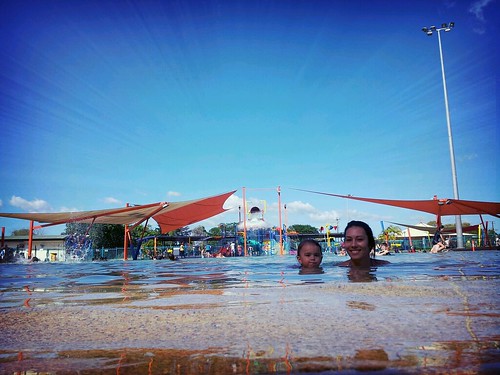 |
| Leanyer Pools |
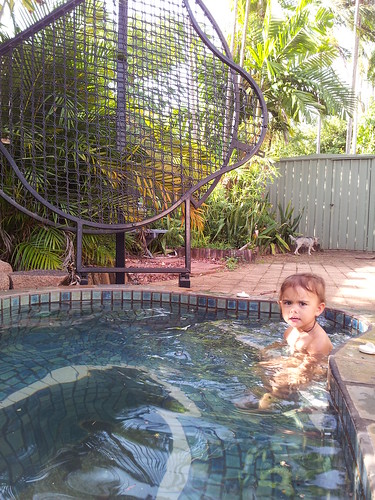 |
| Our backyard pool |
25 March 2012
18 February 2012
Peak Oil Jacket
 |
| Prototype 001 |
These past few months, I've been designing a jacket, working with Julio Valdes in Sydney to develop a pattern, and get a prototype made up, ready for on-demand making. Here's photos of prototype 001. Its made of black oilskin, lined with ventile, and then kangaroo leather on the hood brim and cuffs. There are a few things not shown, such as the RiRi and splash resistant zippers I plan to use, as well as the flaps with press studs to shield the main body zipper.
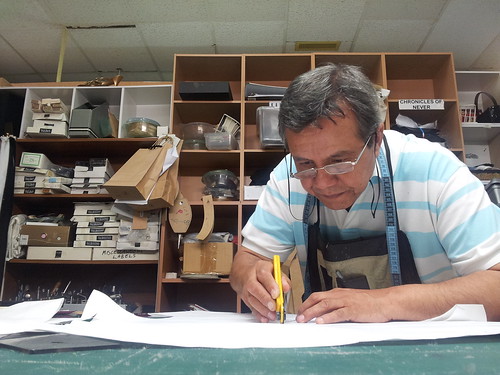 |
| Julio Valdes |
Once I get the design, pattern and materials right, I plan to sell the jacket, made to order, in a variety of materials, from all Kanga leather, to recycled canvas. Although this particular version is pretty heavy weight, it is designed for outdoor activity like skiing. For those who are more worried about weight than they are about durability, there will be a light weight version made from single layer ventile.
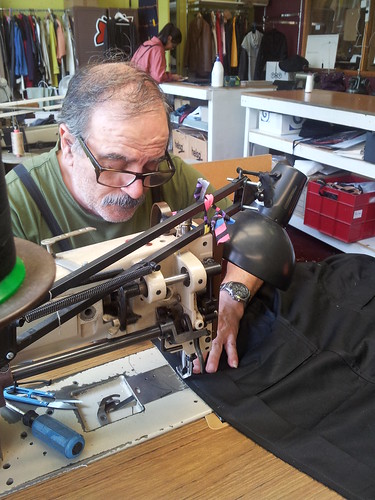 |
| Max |
I'm working on pants, bib and brace over alls, shirts, feather down jackets and wool mid layer jackets. The designs will be open source and simplified to support DIY makers. The materials are natural, and the cuts for active wear. I hope to start marketing the first jacket by the end of the year, after I've finished fully testing the designs and materials in the field, through an Australian winter scrub.
07 February 2012
02 January 2012
While traveling around Australia, who edits Wikipedia and Google places?

My family have been driving through the Victorian and New South Wales alps the past few days, and I've noticed fantastic historical information is often held in unexpected places. Like in pubs, usually hanging all manor of historical artifacts, most notably early settler photographs, but equally as interesting, the trophies and symbols of the sport and industry in the area. I sat in a few, eating my angus steak, and feeding little Eve the chips, and sometimes asking the publican what the background to the images were.
"Oh!" she'd say, "that's the big snow of 52" or "thats the 1902 VFL team, yeah I don't know what the name was of the black fella in the front, no one wrote his name down!"
In these towns there was nearly always an individual, association or information centre who was the local authority, and almost never was it a library or out-of-towner.
This had me thinking about who Wikimedia Chapters target when they run workshops. It seems to me that galaries, libraries, archives and museums have a limited amount of motivation beyond cataloging certain forms of information, and not much in the way of the forms of information I saw on walls. Pubs, historical societies, tourism information centers, and the like, have something more in the way of motivation, esspecially to inform their visitors about their towns. And slowly, more and more of them are becoming reluctantly aware that Wikipedia (and it's information reformatted into Google Maps, Facebook, and personally printed travel guide books) serves that motivation well. With their smart phones updating their locations, navigating roads and discovrring back country, reviewing what they see, eat, do, and where they stay, tourists are using new forms of information to find their way.
I might be running a Wikipedia and Commons training session in Hobart in a few weeks, and if I can, I think I'll try and target these people more. If such work ever was a paid gig, it would be a lovely way to travel around Australia, teaching towns folk about editing the big wikis, and helping them to improve articles about their towns and significant sites, then moving on to the next town.
Maybe Australian towns will be more open to this in a couple of years. We are after al, expecting to see a stronger internet culture developing off the back of nation-wide broadband connectivity.
Subscribe to:
Posts (Atom)
